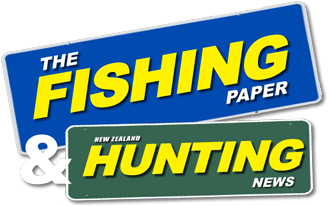Any population of fish in a natural state does not need to be managed. What fisheries managers do is manage people in relation to their impact on fisheries. However, the track record of managing human impact has had mixed results, including some spectacular failures.
On the commercial front, New Zealand’s orange roughy fishery shows what can happen when fisheries managers get a species’ biology wrong. Commercial fishers lawfully over-exploited this fishery until the science showed the species is long-lived and has low fecundity, which required severe reductions in initial harvest levels.
The recent re-opening of the Kaikoura pāua fishery is another example.
It highlights the inevitable consequence of public access to a valued abundant fishery post-closure.
In hindsight, fisheries managers had some tough choices when advising Minister Parker on the re-opening. They could have opted to increase the 5-tonne recreational allowance and/or close the fishery when the allowance was harvested. They also had other ways to constrain effort.
Instead, they opted for the fewest constraints, which led to the 5-tonne allowance being exceeded more than 8-fold; estimated recreational harvest has been increased from 35 to 42 tonnes.
Such failures bring about the realisation that fisheries are often too complex to be effectively managed with top-down control. This can lead to the public losing faith in fisheries managers’ ability to solve problems and, therefore, the public demands a greater voice in decision making.
Figure 1 shows a continuum of management arrangements, with the upper-left depicting a topdown approach. In New Zealand, this approach provides for public consultation on fisheries manager-defined problems and solutions (as options). The public has its say via submissions. Fisheries managers then set their priorities in formulating advice to the minister who generally has full discretion in decision making.
Nearer the other end of the continuum (lowerright), there are few New Zealand examples outside efforts to uphold Crown-Iwi partnerships.
There are examples where the government benefits from commercial fishing organisations undertaking inter-area coordination, such as the rock lobster and pāua fisheries that define areas, with each having a management advisory committee (CRAMACs and PAUAMACs). Coordination occurs at the national level via the New Zealand Rock Lobster Industry Council and the Pāua Industry Council, respectively. when fisheries managers’ advice to the minister goes contrary to those in advisory roles; fisheries managers did not adopt the Kaikoura Guardians’ recommendations on the pāua fishery re-opening other than limiting it to three months. Had these recommendations been adopted, the recreational over-harvest could have been substantially reduced.
Fish Mainland is designed to support the Guardians and South Island recreational fishing-related organisations to achieve their own goals. To accomplish these goals in shared fisheries, there is a recognised need to uphold the rights associated with quota holdings and the settlement of treaty claims.
Our South Island collaborative efforts provide greater opportunities to help fisheries managers and, therefore, move along the management continuum. In so doing, we can have a greater voice in defining problems and workable solutions regarding how to sustainably harvest while lessening our impact on fisheries and the marine environment.













